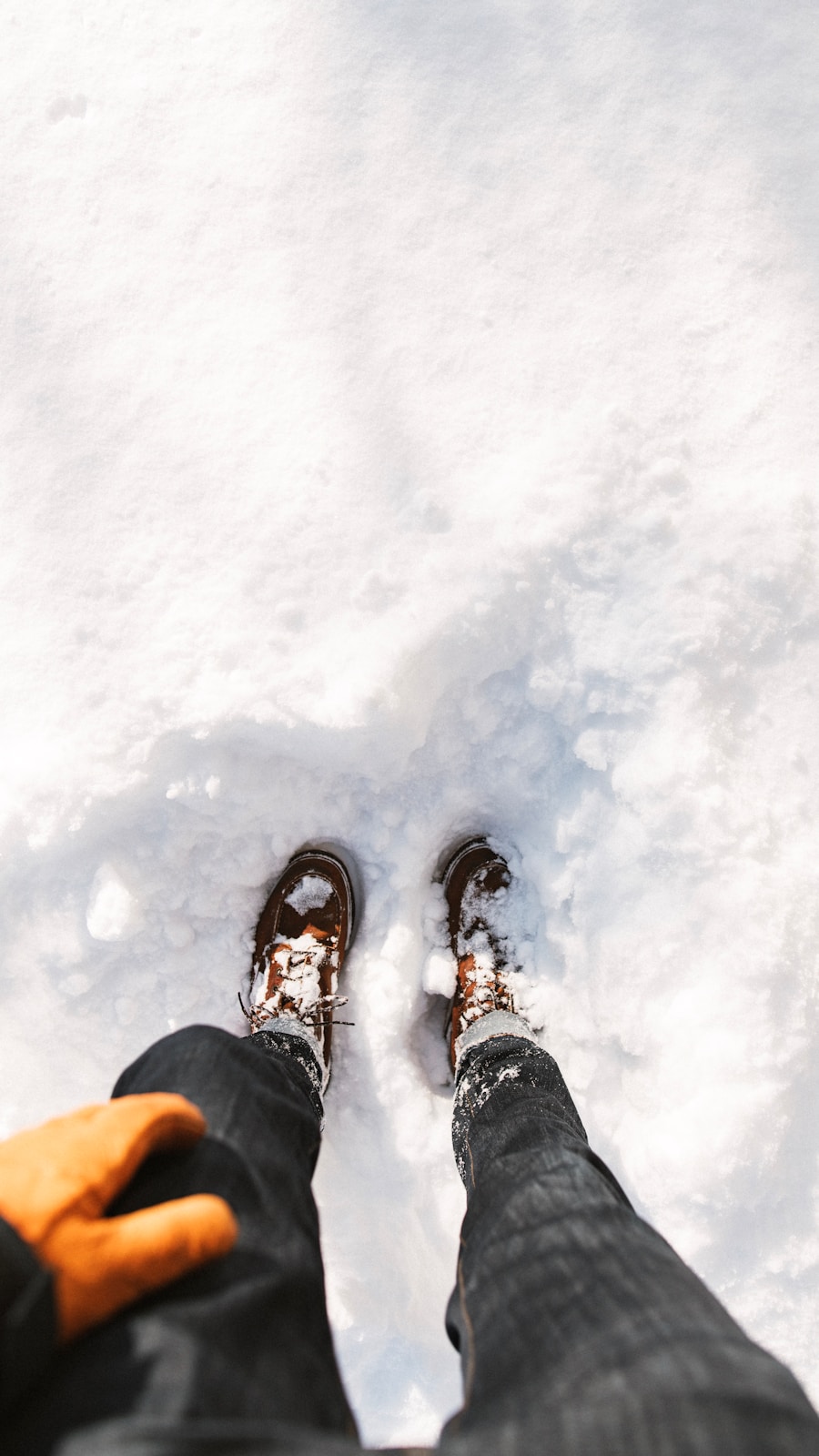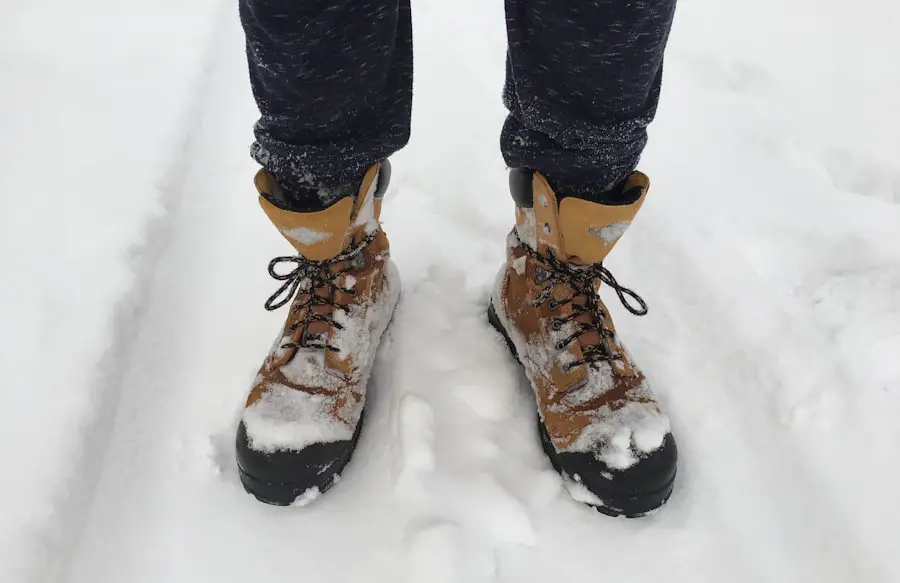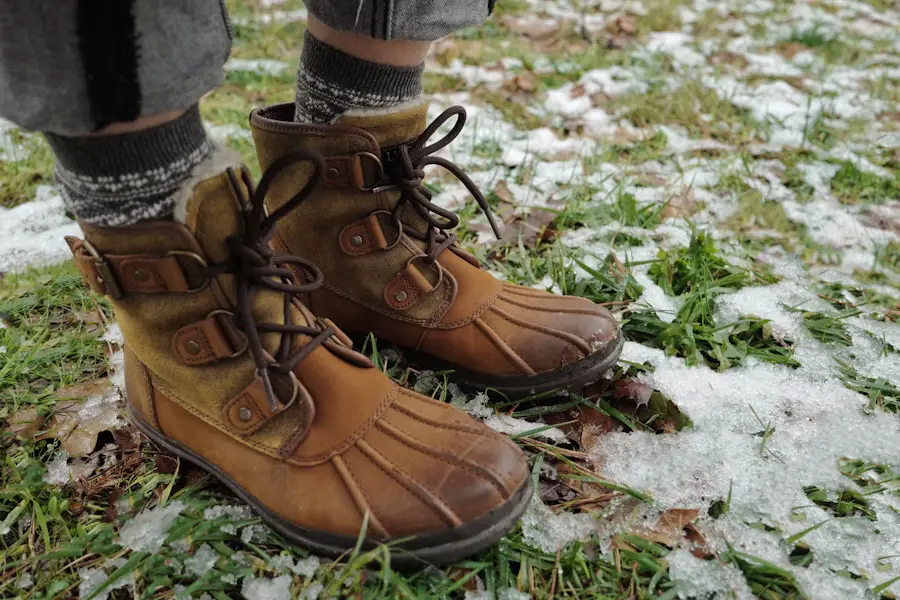Hiking boots are a critical piece of equipment for outdoor enthusiasts, designed to provide support, protection, and comfort during treks across various terrains. Unlike regular footwear, hiking boots are constructed with durable materials that can withstand the rigors of the trail. They typically feature reinforced toe caps, sturdy soles, and ankle support to help prevent injuries.
The design of hiking boots varies significantly based on the intended use, with options ranging from lightweight models for day hikes to heavy-duty boots for multi-day backpacking trips. The anatomy of a hiking boot includes several key components that contribute to its performance. The upper part is often made from leather or synthetic materials, providing durability and breathability.
The midsole is crucial for cushioning and shock absorption, while the outsole is designed with specific tread patterns to enhance grip on different surfaces. Understanding these elements is essential for selecting the right boot for snowy conditions, as they directly impact traction, insulation, and overall comfort during winter hikes.
Key Takeaways
- Hiking boots provide ankle support and stability on uneven terrain, making them essential for snowy conditions.
- Traction is crucial in snow to prevent slipping and falling, so look for boots with aggressive lugs and a good grip.
- Insulation and waterproofing are key features to keep feet warm and dry in snowy conditions.
- Some hiking boots are compatible with crampons and snowshoes, providing versatility for different snowy terrains.
- Proper fit is essential for hiking boots in snowy conditions to prevent blisters and discomfort.
The Importance of Traction in Snow
When hiking in snowy conditions, traction becomes paramount. Snow can create slippery surfaces that increase the risk of falls and injuries. Hiking boots equipped with specialized outsoles featuring deep lugs and aggressive tread patterns are essential for maintaining grip on snow and ice.
These outsoles are often made from rubber compounds that remain flexible in cold temperatures, allowing for better contact with the ground. For instance, Vibram soles are renowned for their performance in winter conditions, providing excellent traction on both packed snow and icy surfaces. In addition to the outsole design, the boot’s overall construction plays a role in traction.
A higher ankle design can help stabilize the foot and prevent rolling on uneven terrain, which is particularly important when navigating through snowdrifts or icy patches. Some hiking boots also incorporate technologies such as multi-directional lugs that enhance grip by allowing the boot to bite into the snow from various angles. This feature is especially beneficial when traversing steep inclines or declines, where maintaining control is crucial.
Insulation and Waterproofing Features

Insulation is another critical factor to consider when selecting hiking boots for snowy conditions. Cold feet can quickly lead to discomfort and even frostbite in extreme temperatures. Many winter hiking boots come with built-in insulation materials such as Thinsulate or fleece linings that trap heat while allowing moisture to escape.
This balance is vital for maintaining warmth without causing overheating during physical exertion. For example, a boot with 200 grams of insulation may be suitable for moderate winter hikes, while those venturing into harsher climates might opt for models with 400 grams or more. Waterproofing is equally important in snowy environments, where melting snow can lead to wet feet if not properly managed.
Many hiking boots feature waterproof membranes like Gore-Tex or proprietary technologies that keep moisture out while allowing breathability. This is crucial because wet socks can lead to blisters and discomfort, significantly diminishing the hiking experience. A well-designed waterproof boot will not only keep your feet dry but also maintain warmth by preventing cold water from seeping in.
Compatibility with Crampons and Snowshoes
| Brand | Model | Compatibility with Crampons | Compatibility with Snowshoes |
|---|---|---|---|
| La Sportiva | Nepal Cube GTX | Yes | Yes |
| Salomon | X Alp MTN GTX | Yes | Yes |
| Scarpa | Phantom Tech | Yes | Yes |
| Black Diamond | Sabretooth Pro | Yes | No |
For those who venture into more challenging winter terrains, compatibility with crampons and snowshoes is an essential consideration when selecting hiking boots. Crampons are devices that attach to footwear to provide additional traction on ice and hard-packed snow, making them invaluable for mountaineering or icy trails. Not all hiking boots are designed to accommodate crampons; therefore, it’s important to choose models with a stiffer sole that can support the added weight and pressure of these traction devices.
Similarly, snowshoes require specific features in hiking boots for optimal performance. A boot with a flexible sole may not provide the necessary support when using snowshoes, which can lead to discomfort and inefficient movement. Ideally, a compatible boot should have a secure fit around the ankle and a rugged outsole that can grip both the snowshoe binding and the underlying surface.
Some manufacturers even design specific winter boots that are marketed as being compatible with both crampons and snowshoes, ensuring versatility for various winter activities.
Proper Fit for Snowy Conditions
Achieving the right fit in hiking boots is crucial, especially when navigating snowy landscapes. A proper fit ensures comfort during long hikes and helps prevent blisters and other foot ailments. When trying on boots, it’s essential to wear the same type of socks you plan to use during your hikes—preferably thicker wool or synthetic socks designed for cold weather.
This will give you a more accurate sense of how the boot will feel in real-world conditions. In snowy environments, it’s also important to consider the potential for swelling in your feet due to cold temperatures or prolonged activity. A boot that feels snug at first may become uncomfortable as your feet swell during a hike.
Therefore, it’s advisable to leave some room in the toe box while ensuring that your heel remains secure without slipping. Additionally, many winter hiking boots come with adjustable lacing systems that allow you to customize the fit around your ankle and instep, providing added support where needed.
Maintaining Hiking Boots in Snow

Proper maintenance of hiking boots is essential for ensuring their longevity and performance, particularly when used in snowy conditions. After each hike, it’s important to clean off any snow, mud, or debris that may have accumulated on the boots. Using a soft brush or cloth can help remove dirt without damaging the material.
For leather boots, applying a specialized cleaner followed by a conditioner can help maintain suppleness and prevent cracking. Waterproofing treatments should also be reapplied periodically, especially after extended use in wet conditions. Many manufacturers offer sprays or waxes designed specifically for their boot materials.
It’s advisable to follow the manufacturer’s recommendations for reapplication frequency based on usage and exposure to harsh elements. Additionally, storing boots in a cool, dry place away from direct sunlight will help preserve their integrity over time.
Alternatives to Hiking Boots in Snow
While hiking boots are often the go-to choice for snowy conditions, there are alternatives that may be more suitable depending on the specific activity or terrain. For instance, insulated winter boots designed specifically for cold weather can provide superior warmth and comfort during short excursions or casual walks in the snow. These boots often feature thicker insulation and a more robust waterproofing system than standard hiking boots.
Another alternative is using trail running shoes with gaiters for lighter winter activities such as snowshoeing or running on packed trails. While they may not offer the same level of insulation or support as traditional hiking boots, they can be an excellent choice for those looking for a lightweight option that allows for greater agility and speed in less extreme conditions. Gaiters can help keep snow out of the shoes while providing an additional layer of protection against moisture.
Using Hiking Boots in Snow
Hiking boots can be an excellent choice for snowy conditions when selected carefully based on their features and fit. With proper attention to traction, insulation, waterproofing, compatibility with additional gear like crampons or snowshoes, and maintenance practices, hikers can enjoy safe and comfortable adventures in winter landscapes. Understanding these elements allows outdoor enthusiasts to make informed decisions about their footwear choices, ensuring they are well-equipped to tackle whatever challenges nature presents during their snowy excursions.
If you are planning to hike in snowy conditions, it is important to have the right gear, including appropriate footwear. Hiking boots are a popular choice for many hikers, but can they be used in snow? According to a related article on TakeTravelInfo, merino wool travel socks are a great option for keeping your feet warm and dry in snowy conditions. These socks are odor-resistant and provide excellent insulation, making them a perfect complement to your hiking boots when trekking through snow-covered trails. Consider investing in a pair of merino wool travel socks to enhance your winter hiking experience. Check out the article here.
FAQs
What are hiking boots?
Hiking boots are sturdy and supportive footwear designed for outdoor activities such as hiking, trekking, and backpacking. They are typically made with durable materials and provide ankle support and traction for various terrains.
Can I use hiking boots in snow?
Yes, hiking boots can be used in snow, especially if they are designed for cold weather and have features such as insulation, waterproofing, and a good tread for traction in icy conditions.
What features should hiking boots have for use in snow?
Hiking boots for use in snow should have insulation to keep your feet warm, waterproofing to keep moisture out, and a good tread for traction on slippery surfaces. Some boots also have gaiters to keep snow from getting inside the boots.
Are all hiking boots suitable for snow?
Not all hiking boots are suitable for snow. It’s important to look for specific features such as insulation, waterproofing, and a good tread designed for icy and snowy conditions when choosing hiking boots for snow.
Can I use regular hiking boots in light snow?
Regular hiking boots can be used in light snow if they have some level of water resistance and a good tread for traction. However, for more intense snow conditions, it’s best to use hiking boots specifically designed for snow.
